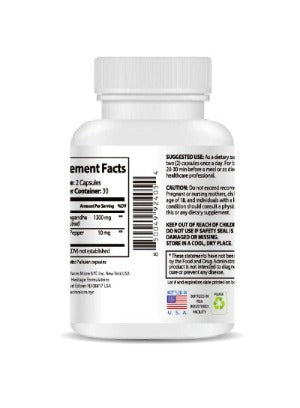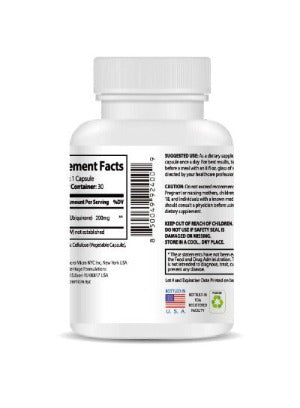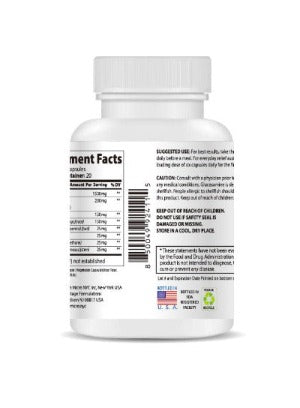In a world where our days are punctuated by glowing screens and our vision is corrected by thin, transparent lenses, it's no surprise that many of us are dealing with a silent, persistent discomfort: our eyes. If you’ve ever felt that familiar grittiness, the constant sting of dryness, or a nagging burning sensation, you are far from alone. This isn't just a minor annoyance; it’s a clear signal from your body that your eyes, two of your most valuable assets, are under stress.
This comprehensive guide is here to help you understand the "why" behind your eye discomfort and, more importantly, to give you the practical, actionable solutions you need to find lasting relief. We’ll dive deep into the dual pressures of contact lens use and prolonged screen time, explore the root causes of these symptoms, and equip you with a toolkit of strategies to soothe and protect your eyes.
The Perfect Storm: Why Contact Lenses and Digital Screens Are a Risky Combination
Imagine your eyes are delicate ecosystems. Now, introduce two major disruptors: contact lenses and digital screens. Each, on its own, presents challenges. Together, they create a "perfect storm" that can leave your eyes feeling perpetually fatigued and irritated.
1. The Contact Lens Factor: Disrupting the Tear Film
Contact lenses, for all their convenience, sit directly on the cornea, the clear, outermost layer of your eye. They act as a physical barrier between your eye's surface and the tear film—the thin, protective layer of fluid that keeps your eyes moist and healthy. The tear film is a complex substance, composed of three layers: an oily lipid layer, a watery aqueous layer, and a mucus-like mucin layer. Each plays a critical role in preventing evaporation, nourishing the eye, and ensuring a smooth surface for clear vision.
Wearing contact lenses can disrupt this delicate balance in several ways:
-
Reduced Oxygen Flow: The cornea receives most of its oxygen directly from the air. A contact lens, no matter how breathable, can restrict this flow, leading to hypoxia (lack of oxygen) and subsequent irritation. Think of it like a plant trying to breathe with a plastic bag over its leaves.
-
Increased Tear Evaporation: The lens material can wick away the watery layer of your tear film, causing it to evaporate more quickly. This is especially true for older or less-advanced lens materials. The result? A depleted tear film that can’t adequately lubricate your eyes.
-
Physical Irritation: Even with a perfect fit, the contact lens can cause micro-irritation to the sensitive surface of the eye, leading to a constant low-level inflammatory response. Over time, this can lead to chronic discomfort.
-
Protein and Debris Buildup: Tears contain proteins, lipids, and other substances. Over the course of the day, these can accumulate on the surface of your contact lens, creating a grimy layer that feels gritty and can cause an allergic or inflammatory reaction.
2. The Digital Screen Factor: A Staring Problem
Now, let's add digital screens into the equation. Whether you’re staring at a computer monitor for work, a smartphone for leisure, or a tablet for reading, you’re engaging in a behavior that is fundamentally unnatural for your eyes.
-
Infrequent Blinking: When we focus intently on a screen, our blink rate plummets. A typical person blinks around 15-20 times per minute. When you're engrossed in a video or a spreadsheet, that rate can drop to as low as 5-7 times per minute. Blinking is crucial; it’s how your eyes replenish and spread the tear film. Fewer blinks mean less lubrication, leading to dryness, burning, and a gritty sensation.
-
Constant Eye Muscle Strain: Looking at a screen forces your eyes to constantly adjust and focus at a fixed, close distance. This continuous muscle strain, known as accommodative spasm, can lead to eye fatigue and headaches.
-
Blue Light Exposure: Digital screens emit high-energy visible (HEV) light, also known as blue light. While research is ongoing, some studies suggest that prolonged exposure to blue light may contribute to eye strain and, potentially, long-term retinal damage.
-
Reduced Contrast and Glare: The glare and poor contrast from screens, especially in poorly lit environments, can make your eyes work even harder. This constant struggle to focus and filter light is a major contributor to eye fatigue.
Understanding the Symptoms: It’s More Than Just Dryness
The term "dry eyes" is often used as a catch-all, but the symptoms can manifest in a variety of ways. Recognizing them is the first step toward effective relief.
-
Dryness and Grittiness: The most classic symptoms, often described as a sandy or foreign body sensation in the eye.
-
Burning or Stinging: A tell-tale sign of a compromised tear film and irritation on the eye’s surface.
-
Redness: Your eyes may appear bloodshot due to inflammation and dilated blood vessels.
-
Blurry Vision: Paradoxically, dry eyes can cause temporary blurry vision as the tear film becomes uneven. This often improves with blinking.
-
Watery Eyes (Tearing): This might seem counterintuitive, but it's a common symptom. When your eye feels excessively dry, it can trigger a reflex to produce a flood of tears. However, these are often just the watery layer, lacking the necessary oils to prevent rapid evaporation, leading to a cycle of dryness and tearing.
-
Light Sensitivity (Photophobia): An irritated, dry eye is more sensitive to light, making it uncomfortable to be outdoors or in brightly lit rooms.
Your Action Plan: Practical Solutions to Soothe Your Eyes
Finding relief from eye discomfort isn't about a single magic bullet. It’s about adopting a holistic approach that addresses the problem from multiple angles. Here are some of the most effective strategies you can start implementing today.
1. Optimize Your Screen Habits (The 20-20-20 Rule & More)
-
The 20-20-20 Rule: This is the golden rule of screen time. For every 20 minutes you spend looking at a screen, take a 20-second break to look at something at least 20 feet away. This simple action forces your eyes to change focus and gives them a much-needed break from the strain of close-up work.
-
Adjust Your Ergonomics: Position your monitor about an arm's length away, with the top of the screen slightly below eye level. This helps reduce neck strain and encourages a more natural viewing angle.
-
Dim the Glare: Reduce screen brightness to match the light levels in your room. Use anti-glare filters on your screens and ensure your workspace is well-lit, but without direct light sources reflecting off the screen.
-
Conscious Blinking: Set reminders to consciously blink, or even close your eyes completely for a few seconds. This simple act is one of the most powerful tools you have to combat dryness.
2. Hydration and Nutrition: Fueling Your Eyes from Within
-
Stay Hydrated: Just as your body needs water, so do your eyes. Dehydration can affect tear production. Aim to drink an adequate amount of water throughout the day.
-
Omega-3 Fatty Acids: Incorporate foods rich in Omega-3s, such as salmon, flaxseed, chia seeds, and walnuts. These healthy fats are crucial for the oily layer of your tear film, helping to prevent evaporation.
-
Vitamins A, C, and E: These antioxidants are vital for eye health. You can find them in colorful fruits and vegetables like carrots, bell peppers, spinach, and citrus fruits.
3. Environmental Adjustments: Creating an Eye-Friendly Space
-
Use a Humidifier: Dry air, especially from air conditioning or heaters, can wreak havoc on your tear film. A humidifier can add moisture to the air and provide significant relief.
-
Reduce Airflow: Avoid having fans, air conditioners, or car vents blowing directly into your face, as this can accelerate tear evaporation.
-
Wear Sunglasses: When outdoors, quality sunglasses protect your eyes from UV rays and wind, both of which can contribute to irritation and dryness.
4. The Contact Lens Management:
-
Choose the Right Lenses: Not all contact lenses are created equal. Newer silicone hydrogel lenses are designed to be more breathable and retain moisture better. Talk to your optometrist about lenses that are specifically suited for dry eyes.
-
Follow the Wear Schedule: Never wear your lenses for longer than recommended. Overwearing them is a surefire way to cause discomfort and potential damage.
-
Proper Cleaning and Storage: Use a fresh, multi-purpose solution every time you clean and store your lenses. This prevents the buildup of debris and bacteria that can cause irritation.
Beyond the Basics: Other Soothing Practices
While the above are the foundations, there are other methods that can provide significant comfort. For instance, the simple act of applying a warm compress can be incredibly soothing. The warmth can help stimulate oil glands in your eyelids (meibomian glands), which are essential for producing the lipid layer of your tears. This can help improve tear quality and reduce the feeling of grittiness.
Consider incorporating these simple, yet effective, routines into your daily life to give your eyes the care they deserve. The goal is to create a habit of proactive eye care, not just reactive treatment when the discomfort becomes unbearable.
Your Questions, Answered: 5 FAQs About Eye Discomfort
Q1: Can wearing contact lenses really cause long-term damage to my eyes?
A: When used improperly, yes, they can. Overwearing lenses, sleeping in them when not designed for it, or poor hygiene can lead to serious issues like corneal ulcers or infections. However, when used as directed and with proper care under the guidance of an eye care professional, contact lenses are a safe and effective way to correct vision. The key is to be diligent about your routine and listen to your eyes.
Q2: I use lubricating eye drops, but my eyes still feel dry. Am I doing something wrong?
A: Not necessarily. Not all eye drops are the same. Some are simply saline solutions that provide temporary moisture, while others are more advanced artificial tears formulated to mimic the natural tear film. If you're using a basic drop, you might need a product with a more viscous or oil-based formula to better address tear evaporation. Also, ensure you’re using them correctly and not overusing them, which can sometimes wash away your natural tears. Consulting an optometrist can help you find the right type of drop for your specific needs.
Q3: What’s the difference between eye strain and dry eye? Are they the same thing?
A: They are related but distinct. Eye strain is the fatigue that results from prolonged focus and muscle exertion, often leading to symptoms like headaches and blurry vision. Dry eye is a condition where your eyes don't produce enough quality tears to stay lubricated, leading to a gritty or burning sensation. However, eye strain can cause you to blink less, which can then exacerbate or even trigger dry eye symptoms.
Q4: Is it better to wear glasses than contact lenses to avoid eye problems?
A: For some people, yes. Glasses don't directly interfere with your tear film or oxygen flow to the cornea, making them a more eye-friendly option, especially for people with chronic dry eye. Alternating between glasses and contacts—for example, wearing glasses on days when you’re working on a computer for long periods—can be an excellent way to give your eyes a break and reduce discomfort.
Q5: Are there natural or herbal remedies that can help with eye discomfort?
A: While you should always consult an eye care professional for medical advice, many people find relief through natural approaches. For example, warm compresses can soothe irritation and improve tear gland function. Consuming a diet rich in antioxidants and Omega-3 fatty acids can also support overall eye health. The key is to see these as complementary aids to a good eye care routine, not as a replacement for professional guidance.









